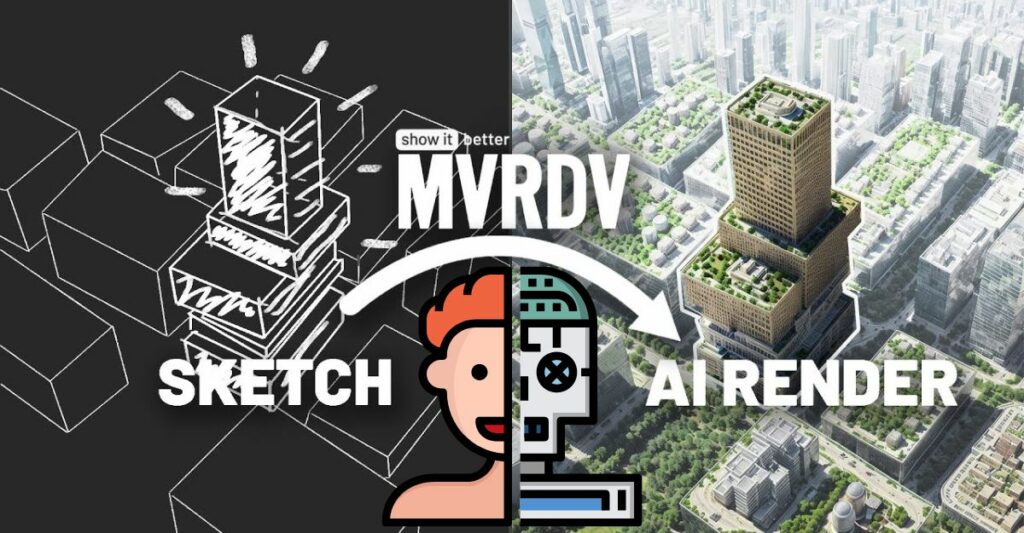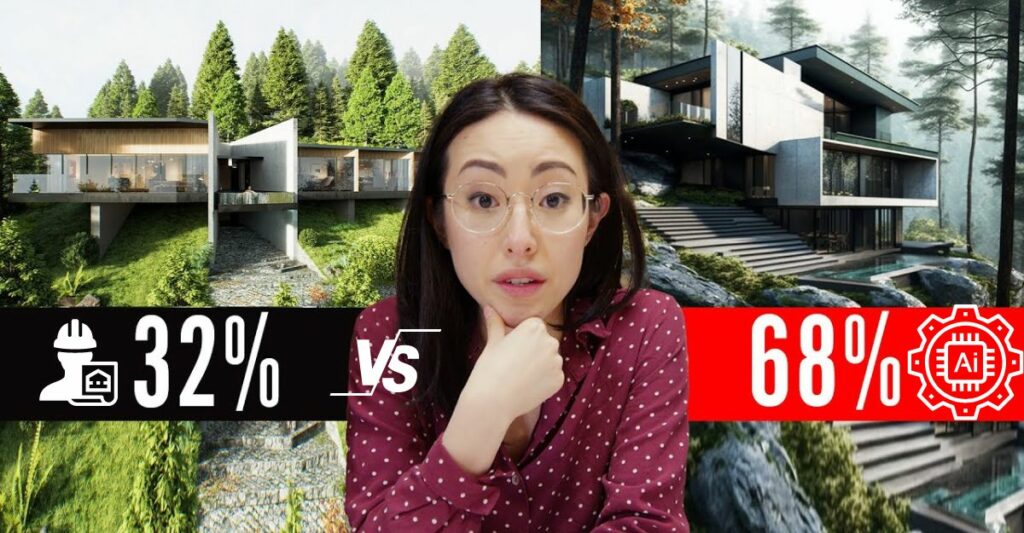Introduction
Discover “Show It Better,” a YouTube channel dedicated to empowering architects across the globe with the skills and knowledge essential for exceptional architectural representation. This platform offers a rich array of courses, tutorials, and resources designed to enhance the craft of architectural visualization. Whether you’re a seasoned professional or an aspiring architect, “Show It Better” is your go-to destination for mastering the latest techniques and tools that will elevate your design presentations and bring your visions to life with clarity and impact.
MVRDV Innovates Design with AI: Revolutionizing the Architectural Process
MVRDV, a leading architecture firm, is embracing AI to revolutionize the design process. By integrating AI tools like Midjourney and Stable Diffusion, they enhance brainstorming, technical processes, and renderings, pushing the boundaries of creativity and efficiency. The firm’s approach to AI is research-driven, focusing on ethical use and personalized models that align with their design philosophy, ultimately aiming to rehumanize the design process and inspire innovative architectural spaces.

How has MVRDV utilized AI in their architectural projects?
MVRDV has used AI to generate variations of their 3D models, exploring different aspects such as materiality, spatial design ideas, and specific parts of the design. They integrate AI into their research-based design practice, using it to enhance their creative process and experiment at a faster pace and larger scale than previously possible.
What is the significance of AI in the evolution of architectural design tools?
AI signifies a leap in the evolution of architectural design tools, promising to enhance the creative process not just by automating tasks, but by allowing architects to visualize and realize designs more efficiently. It represents a shift from traditional methods to a more efficient and faster approach to design.

How did MVRDV initially approach the integration of AI into their design process?
MVRDV’s initial approach to integrating AI was through organic curiosity-driven explorations. They started by sharing knowledge within the office, conducting brainstorming sessions, and giving smaller teams a design challenge to work on using AI tools like Midjourney and Stable Diffusion.
What are the potential limitations of using AI in architectural design?
AI in architectural design has limitations such as the rapid pace of technological evolution, which can make it challenging to keep up with the latest advancements. Additionally, AI may not fully account for cultural context, local costs, programmatic requirements, and other nuanced aspects of the research-driven design process.

How does AI affect the distribution of tasks within architectural teams?
AI allows architectural teams to focus more on creative tasks by taking over repetitive and time-consuming ones. It increases efficiency, enabling team members to use their expertise in more beneficial ways for the design process, rather than getting lost in production workflows.

What ethical considerations does AI bring to the field of architecture?
AI brings ethical considerations related to copyright and ownership of images used for training AI models. There’s a need to ensure that AI models are trained on appropriate datasets and respect the creative boundaries and intellectual property rights of others.
How does MVRDV ensure that their AI models align with their design principles?
MVRDV ensures their AI models align with their design principles by using only images that are their property to train the models. This personalized AI tool can understand the office’s perspective, mission, and principles, leading to designs that are more in tune with MVRDV’s ethos.

What is the role of ‘lora trading’ in MVRDV’s AI integration?
Lora trading is used to fine-tune existing AI models, making small, specific changes to better suit the needs of a project. It’s akin to customizing a pre-trained AI model to recognize certain architectural styles or create designs within specific parameters without having to rebuild the model from scratch.
How does AI influence the architectural rendering process?
AI influences the architectural rendering process by allowing for precise modifications to renderings, including the addition of materials and changes in style. Tools like Stable Diffusion and control nets can create atmospheric images that adhere to architectural rules, enhancing the design process and client presentations.

What future possibilities does AI offer for architectural design?
AI offers future possibilities such as integrated BIM software where specific design parameters can be inputted to automate certain aspects of design. It also allows for the exploration of new ideas, pushing the boundaries of creativity and enabling architects to see projects from previously unimagined angles.
How does the speaker view the overall impact of AI on the architectural profession?
The speaker views the impact of AI on the architectural profession positively. They believe AI will continue to play a pivotal role, driving innovation, efficiency, and inspiring new ways to imagine and create spaces. AI is seen as a tool that enhances the design process rather than replacing the human element of creativity.
Mindmap

Complete Content
In the eye-opening video, the speaker explores the transformative impact of Artificial Intelligence (AI) on the architectural design processes of MVRDV, a leading avant-garde architecture firm known for its unconventional and research-centric design practices.
The journey begins with a glimpse of a project undertaken by MVRDV that utilizes AI to generate a plethora of design variations from a base 3D model. Each variation, slightly different from the other, presents numerous design possibilities in terms of materiality, spatial ideas, and specific parts of the design.
The narrative delves into the core philosophies of MVRDV. Since the ’90s, the firm has engaged in a broad spectrum of projects, ranging from roofing to city planning and even furniture design. This approach is characterized by creating hypotheses and then designing through intensive research to confirm or disprove these conjectures.
Central to the video is an interview with Kas Oosterhuis, an architect and project leader at MVRDV. Emphasizing the role of change and innovation, Kas reveals how embracing technological evolution has been vital to the firm’s tradition and success. AI’s introduction to architectural design is portrayed as a significant game-changer, enhancing the creative process rather than stifling it.
Freddy Förberg, an architect and AI specialist at MVRDV, shares insights into how AI is reshaping the approach to architecture at the firm. From speeding up repetitive tasks to enhancing the efficiency and creativity of design processes, AI is touted as a ‘power tool’, not a ‘magic wand’.
The video unpacks the challenges faced while integrating AI into MVRDV’s existing workflows, including adapting to the technology’s rapid evolution and aligning AI capabilities with the firm’s creative vision. MVRDV’s iterative and organic exploration of AI began with the diffusion of the technology among the more technically inclined staff members, spreading to the larger office through collaboration and experimentation.
MVRDV’s utilization of AI tools like Midjourney and Stable Diffusion is illustrated in various stages of the architectural process. The firm discovered that these tools could be advantageous not only in the initial brainstorming phases but also during later, more technical stages.
One major concern addressed in the discussion is the ethical implications of AI’s capacity to generate original images regardless of copyright laws. Freddy emphasizes the importance of responsibly sourcing data for training AI models.
As the video concludes, a future where AI is ingrained within the architecture industry is envisioned, one where AI-assisted design leads to increased efficiency and enables architects to focus on the most creative aspects of their work.
The speaker thanks Kas Oosterhuis and Freddy Förberg for their insights into MVRDV’s progressive use of AI in architecture and encourages the audience to explore more about the firm. The video serves as a testament to MVRDV’s innovative use of AI in redefining the boundaries of architectural design and the potential it holds for the future of the discipline.




